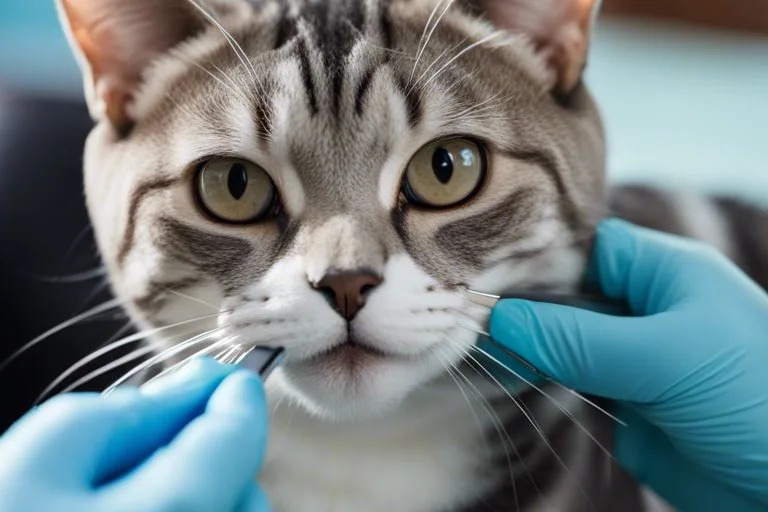Did you know that periodontal disease is one of the most common diseases in cats? In fact, it is estimated that by the age of three, over 70% of cats have some form of dental disease. As a pet owner, it is crucial to understand the importance of early detection in preventing periodontal disease in your American Shorthair cat. Without proper intervention, periodontal disease can lead to tooth loss, pain, and even systemic health issues. By regularly monitoring your cat’s oral health and seeking professional veterinary care, you can take proactive steps to prevent and manage this potentially dangerous condition. In this blog post, we will discuss the signs and symptoms of periodontal disease in cats, the importance of early detection, and steps you can take to promote your cat’s dental health.
Key Takeaways:
- Early detection is crucial: Regular dental check-ups and early detection of periodontal disease can prevent further progression and maintain overall oral health in American Shorthair cats.
- Preventive measures are essential: Regular dental care, including brushing their teeth, providing dental treats and toys, and a balanced diet, can help in preventing periodontal disease in American Shorthair cats.
- Consult with a veterinarian: It is important to consult with a veterinarian for professional advice and guidance on the best preventive measures and dental care practices for your American Shorthair cat.
Understanding Periodontal Disease
Even though you may have heard of periodontal disease in humans, it is just as prevalent in cats. Periodontal disease is a progressive inflammatory condition that affects the supporting structures of your cat’s teeth, including the gums, periodontal ligament, and alveolar bone. If left untreated, it can lead to pain, tooth loss, and even systemic health problems.
The Pathology of Periodontal Disease
Periodontal disease begins with the formation of plaque, a sticky film of bacteria, on the teeth. Over time, this plaque mineralizes into tartar, which provides a rough surface for even more plaque to adhere to. The bacteria in the plaque produce toxins that irritate the gums, leading to inflammation. This inflammation can cause the gums to recede, creating pockets between the teeth and gums where more bacteria can thrive. In advanced stages, the toxins and associated inflammation can begin to erode the supportive structures of the teeth, leading to tooth loss and other systemic health issues if not addressed.
Stages of Periodontal Disease in Cats
Periodontal disease in cats progresses through several stages. In the early stages, you may notice redness and mild inflammation of the gums, bad breath, and mild tartar buildup. As the disease progresses, you may see increased tartar buildup, gum recession, and signs of discomfort such as pawing at the mouth or difficulty eating. In the most advanced stages, there may be severe gum recession, loose or missing teeth, and evidence of systemic health issues such as kidney or heart disease linked to the chronic inflammation and bacterial load in the mouth.
Early detection and intervention are crucial to preventing the progression of periodontal disease in your American Shorthair cat.
The American Shorthair Cat
Obviously, as a cat owner, you want to ensure the best possible health for your beloved pet. American Shorthair cats are known for their overall good health and longevity. However, they are still susceptible to periodontal disease, just like any other breed of cat. This disease can cause serious health issues for your feline friend if left untreated. To learn more about periodontal disease in cats, you can read our article Periodontal disease in cats (gum inflammation).
Breed Characteristics and Health Predispositions
American Shorthair cats are generally healthy and robust cats, known for their easy-going and affectionate nature. However, they do have certain health predispositions that you need to be aware of. These may include dental issues such as periodontal disease, as well as obesity and heart disease. Regular veterinary check-ups and a good dental care routine can help ensure your American Shorthair’s overall health and well-being.
Dental Anatomy and Common Dental Issues
The dental anatomy of American Shorthair cats is similar to that of other breeds, with 30 adult teeth, comprising incisors, canines, premolars, and molars. Just like humans, they can suffer from common dental issues such as plaque and tartar build-up, gum disease, and tooth decay. The most dangerous issue that you need to be aware of is periodontal disease, which can lead to tooth loss, bone damage, and systemic infections. However, with regular dental care, including brushing your cat’s teeth and providing appropriate chew toys, you can help prevent these issues and keep their teeth and gums healthy and strong.
Detection and Prevention Strategies
Now, let’s talk about strategies for early detection and prevention of mouth periodontal disease in your American Shorthair cat. As mentioned earlier, American Shorthair cats are prone to periodontal disease, so it is crucial to be proactive in detecting and preventing this condition. To understand the specific needs and predispositions of your American Shorthair, you can refer to resources such as the American Shorthair breed info.
Diagnostic Tools for Early Detection
Regular dental check-ups with your veterinarian are crucial for early detection of periodontal disease. Your vet can perform a thorough oral examination and recommend dental X-rays if necessary. These diagnostic tools can help identify any potential issues before they escalate into more serious problems. Additionally, be on the lookout for symptoms such as bad breath, inflamed gums, or difficulty eating, as these can also be indicators of periodontal disease.
Preventative Measures and Owner Education
Preventing periodontal disease in your American Shorthair starts with good dental hygiene. Brushing your cat’s teeth regularly with a toothbrush and cat-friendly toothpaste is key to preventing plaque and tartar buildup. Your vet can provide guidance on the proper technique for brushing your cat’s teeth. Moreover, providing your cat with dental treats or toys designed to promote oral health can also help minimize the risk of periodontal disease. It’s important for you, as a cat owner, to stay informed and educated about the best practices for maintaining your American Shorthair’s dental health.
Treatment and Management
After Periodontal disease in cats: Current best practices for diagnosis, treatment, and prevention, is diagnosed in your American Shorthair cat, it is important to begin treatment and management of the condition. The goal of treatment is to reduce inflammation, pain, and infection in the mouth, and to prevent further progression of the disease.
Professional Dental Cleaning and Treatment Options
If your American Shorthair cat is diagnosed with periodontal disease, your veterinarian may recommend a professional dental cleaning. This involves the removal of plaque and tartar above and below the gum line, as well as a thorough examination of the mouth and teeth. In some cases, extractions of severely damaged teeth may be necessary to address the underlying infection and inflammation.
Home Care and Long-term Management of Feline Periodontal Health
Once your cat has received professional dental treatment, it is important to maintain good oral hygiene at home. Your veterinarian may recommend brushing your cat’s teeth with a feline-specific toothbrush and toothpaste. Additionally, there are dental diets and treats available that can help to reduce plaque and tartar buildup. It is essential to continue regular dental check-ups with your veterinarian to monitor your cat’s oral health and address any concerns that arise.
Can Early Detection Prevent Mouth Periodontal Disease In American Shorthair Cats?
On the whole, early detection plays a crucial role in preventing mouth periodontal disease in American Shorthair cats. By regularly monitoring your cat’s dental health and initiating preventive measures such as regular teeth brushing, dental cleanings, and a balanced diet, you can significantly reduce the risk of developing periodontal disease. Additionally, scheduling annual dental check-ups with your veterinarian can help identify any potential issues early on, allowing for prompt intervention. Remember, your proactive approach to your cat’s dental health can make a significant impact on preventing periodontal disease and ensuring your feline companion’s overall well-being.
FAQ
Q: What is periodontal disease in American Shorthair cats?
A: Periodontal disease in American Shorthair cats is a bacterial infection of the tissues surrounding the teeth. It can lead to tooth loss, pain, and systemic illness if not treated.
Q: Can early detection prevent periodontal disease in American Shorthair cats?
A: Yes, early detection through regular dental check-ups and home care can help prevent periodontal disease in American Shorthair cats. Catching the disease in its early stages allows for more effective treatment and a better prognosis.
Q: What are the signs of periodontal disease in American Shorthair cats?
A: Signs of periodontal disease in American Shorthair cats can include bad breath, red or swollen gums, loose or missing teeth, difficulty eating, and drooling. If you notice any of these symptoms, it’s important to bring your cat to the veterinarian for a dental exam.
Q: How can I prevent periodontal disease in my American Shorthair cat?
A: You can prevent periodontal disease in your American Shorthair cat by brushing their teeth regularly, providing them with dental treats or toys, and scheduling regular dental check-ups with your veterinarian. A healthy diet and proper oral hygiene can also help prevent the disease.
Q: What are the treatment options for periodontal disease in American Shorthair cats?
A: Treatment for periodontal disease in American Shorthair cats may include dental cleanings, antibiotic therapy, tooth extractions, and pain management. In severe cases, your veterinarian may also recommend additional treatments to address any systemic effects of the disease. Early detection and treatment are key to managing periodontal disease in cats.



